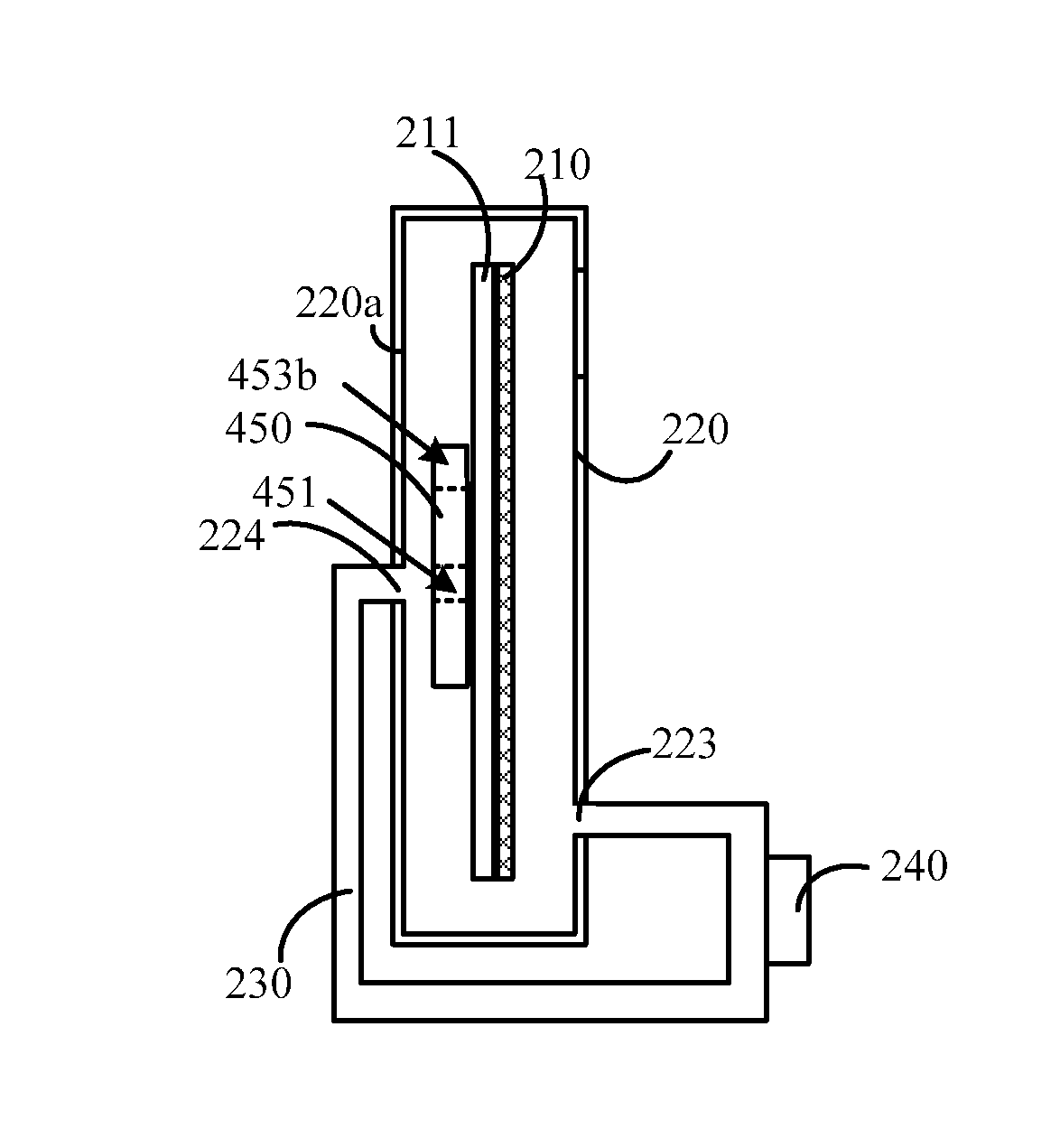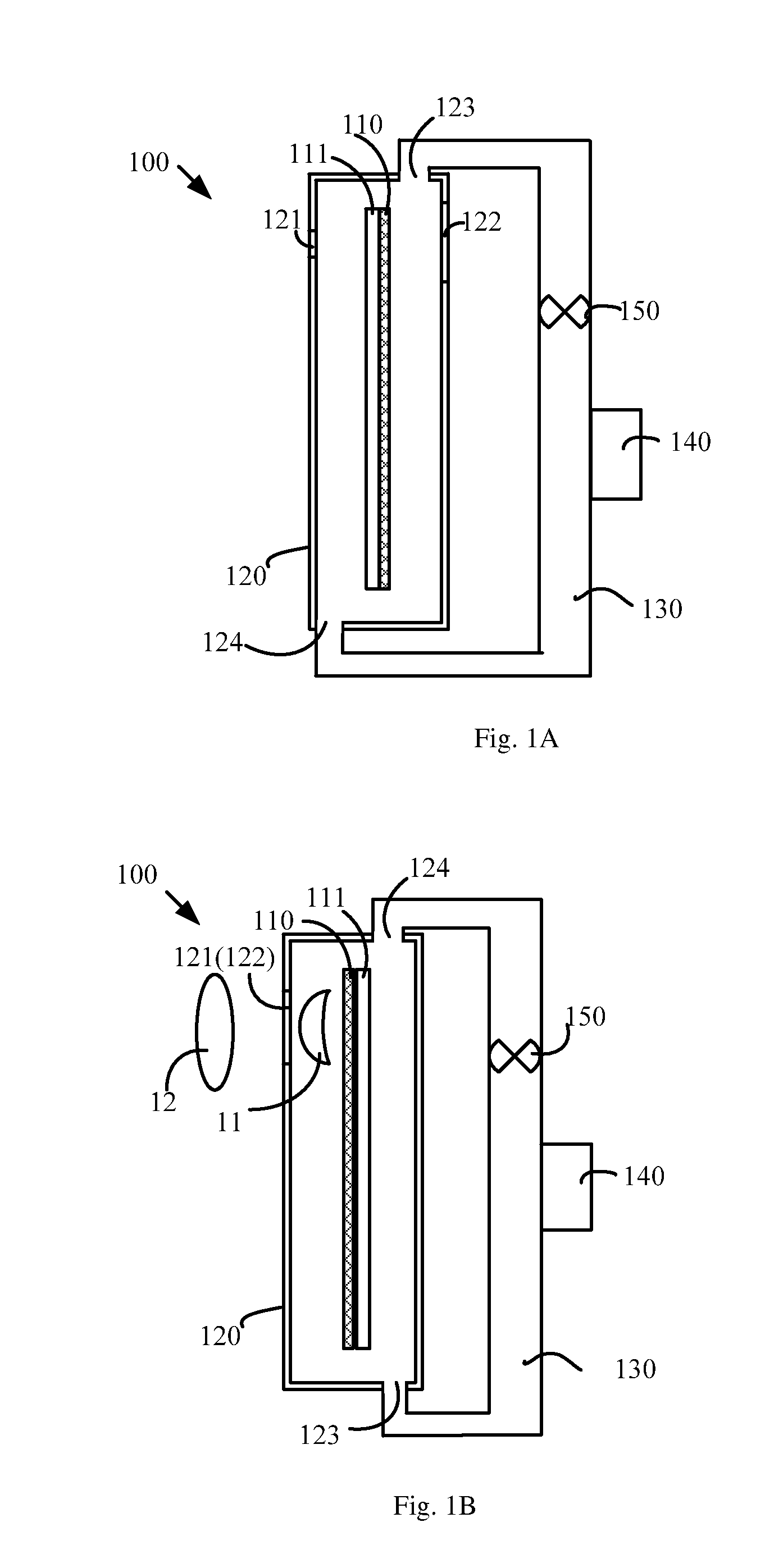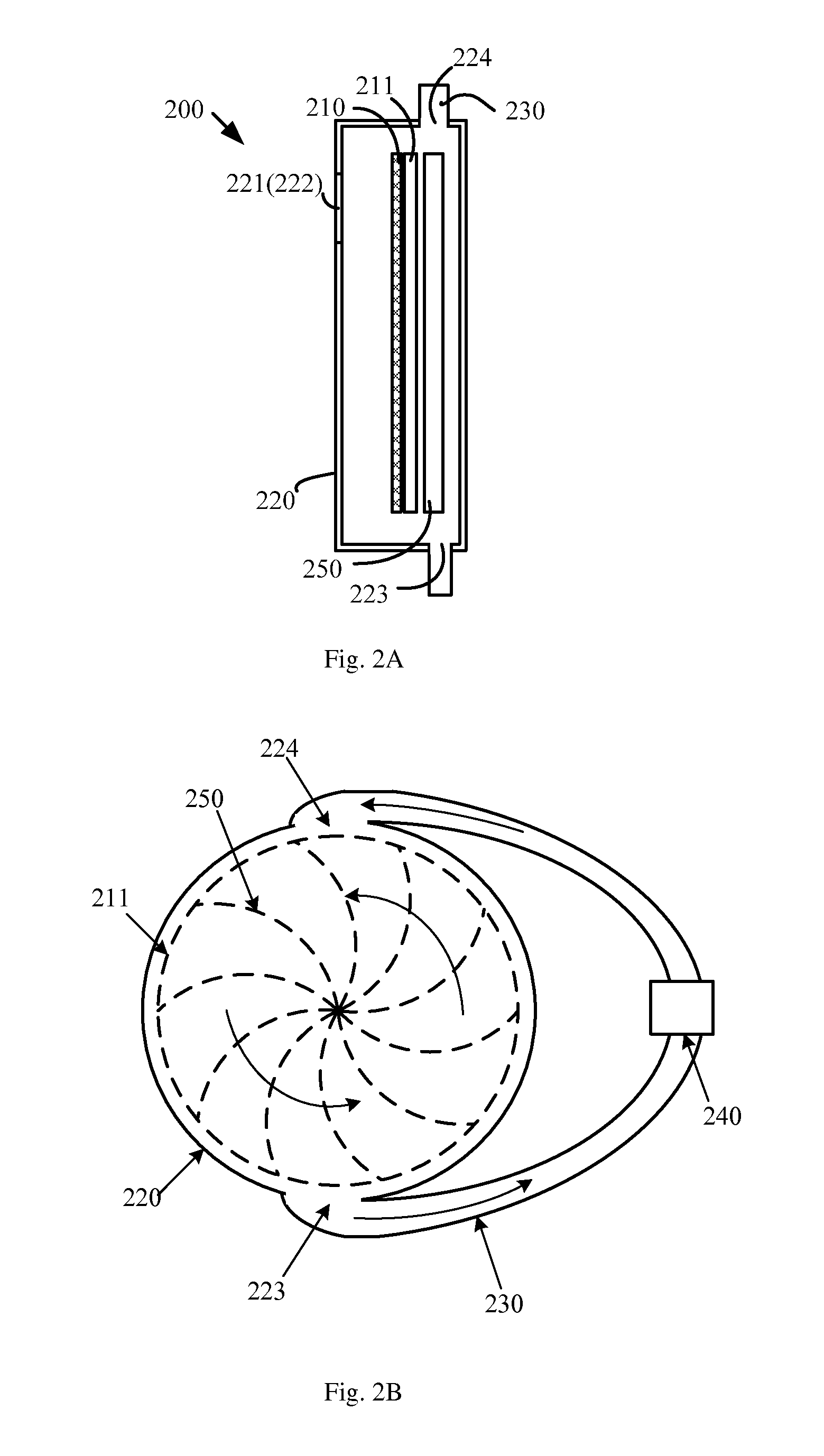Wavelength conversion device and related light emitting device
- Summary
- Abstract
- Description
- Claims
- Application Information
AI Technical Summary
Benefits of technology
Problems solved by technology
Method used
Image
Examples
first embodiment
[0035]Referring to FIG. 1, which schematically illustrates the structure of a wavelength conversion device according to an embodiment of the present invention. As shown in FIG. 1, the wavelength conversion device 100 includes a wavelength conversion layer 110, a box 120, a conduit 130, a heat exchanger 140 and an air circulation device 150.
[0036]The wavelength conversion layer 110 is used to absorb an excitation light and generate a converted light. The wavelength conversion layer 110 includes wavelength conversion material. A common wavelength conversion material is phosphor powder, such as YAG (yttrium aluminum garnet) phosphor, which can absorb blue excitation light and generate a yellow converted light. The wavelength conversion material may also be quantum dots, fluorescent dye, and other materials that have wavelength conversion properties, in addition to phosphors. In many situations, the wavelength conversion material is a power or particulate form, and is difficult to form ...
second embodiment
[0056]Refer to FIGS. 2A and 2B, where FIG. 2A schematically illustrates the structure of a wavelength conversion device according to another embodiment of the present invention, and FIG. 2B is a right side view of the wavelength conversion device shown in FIG. 2A. The wavelength conversion device 200 includes a wavelength conversion layer 210, a substrate 211, a box 220, a conduit 230, a heat exchanger 240, and an air circulation device 250. The box 220 includes a first area 221, a second area 222, an air outlet 223, and an air inlet 224.
[0057]Differences between this embodiment and the embodiment of FIG. 1A include:
[0058]In this embodiment, the air circulation device 250 is placed inside the box 220, and located on the side of the substrate 211 that faces away from the wavelength conversion layer 210. Correspondingly, the air outlet 223 and / or the air inlet 224 of the box 220 is located on the side of the plane of the substrate 211 that faces away from the wavelength conversion lay...
third embodiment
[0084]Refer to FIG. 6, which schematically illustrates the structure of a wavelength conversion device according to another embodiment of the present invention. As shown in FIG. 6, the wavelength conversion device 600 includes a wavelength conversion layer 610, a substrate 611, a box 620, a conduit 630, a heat exchanger 640, an air circulation device 650, and a drive device 660. The box 620 includes a first area 621, a second area 622, an air outlet 623 and an air inlet 624.
[0085]Differences between this embodiment and the above embodiments include:
[0086]In this embodiment, the wavelength conversion device 600 further includes a drive device 660 (such as a motor), fixedly coupled to the substrate 611, to drive the wavelength conversion layer 610 to rotate periodically. The surface of the drive device 660 that faces away from the substrate 611 is fixedly connected to the inner surface of the box 620. The substrate 611 is preferably round plate, with at least two segments along the ci...
PUM
 Login to View More
Login to View More Abstract
Description
Claims
Application Information
 Login to View More
Login to View More - R&D
- Intellectual Property
- Life Sciences
- Materials
- Tech Scout
- Unparalleled Data Quality
- Higher Quality Content
- 60% Fewer Hallucinations
Browse by: Latest US Patents, China's latest patents, Technical Efficacy Thesaurus, Application Domain, Technology Topic, Popular Technical Reports.
© 2025 PatSnap. All rights reserved.Legal|Privacy policy|Modern Slavery Act Transparency Statement|Sitemap|About US| Contact US: help@patsnap.com



